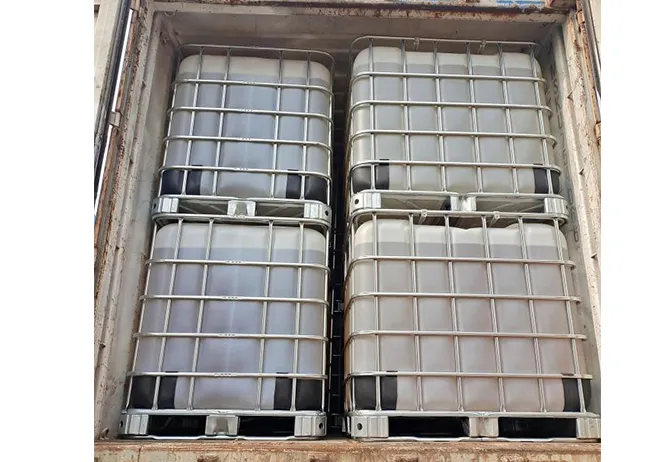
acetone on rubber
The Impact of Acetone on Rubber A Comprehensive Analysis
Acetone, a colorless, volatile organic compound commonly used as a solvent in various industrial and household applications, has significant interactions with rubber. Understanding these interactions is crucial because rubber, used in everything from tires to seals, is essential in many industries. This article explores the chemical properties of acetone and rubber, the effects of acetone on rubber materials, and considerations for safe and effective utilization in applications involving these substances.
Acetone A Brief Overview
Acetone is a simple ketone with a chemical formula of C3H6O. Known for its excellent solvent properties, acetone dissolves a wide range of organic compounds, making it invaluable in laboratories, nail polish removers, and paint thinners. Its polar nature allows it to disrupt intermolecular forces, leading to the effective dissolution of various substances.
Rubber Composition and Types
Rubber is a natural or synthetic polymer that exhibits elasticity, making it suitable for a myriad of applications. There are two primary types of rubber natural rubber, derived from the latex of rubber trees, and synthetic rubber, produced through the polymerization of various monomers such as styrene and butadiene. Each type has varying resistance to solvents, oils, and chemicals, which influences its suitability for specific applications.
How Acetone Affects Rubber
The interaction between acetone and rubber is complex and can lead to several outcomes depending on the type of rubber involved. Generally, acetone tends to swell and degrade rubber materials, which can lead to significant changes in their physical properties.
acetone on rubber

1. Swelling and Softening When rubber is exposed to acetone, it often absorbs the solvent, resulting in swelling. This swelling can lead to increased flexibility in the short term. However, prolonged exposure typically results in softening and loss of mechanical strength, affecting the rubber's performance in applications where rigidity and resilience are essential.
2. Degradation and Cracking In many instances, acetone can initiate a degradation process in rubber that leads to hardening, cracking, and eventual failure of the material. The degradation rate will vary based on the rubber composition; for instance, natural rubber may be more susceptible to acetone than many synthetic rubbers, which are engineered for chemical resistance.
3. Surface Damage Acetone can also lead to surface damage manifesting as crazing or micro-cracking. Such surface imperfections compromise the integrity of rubber seals or tires, potentially leading to leaks or blown tires in automotive applications.
Applications and Safety Considerations
Given the aggressive nature of acetone towards rubber, it is crucial to consider its implications during application or maintenance. In industries where rubber components are in direct contact with acetone, alternatives such as fluorosilicone or Viton rubber, known for their chemical resistance, should be considered.
When handling acetone, safety is paramount due to its flammable nature and the potential health hazards associated with prolonged inhalation or skin contact. Proper ventilation, protective gloves, and safety glasses are essential to ensure safe working conditions.
Conclusion
Acetone is a powerful solvent with a profound impact on rubber materials. Understanding the interactions between acetone and rubber is vital for industries reliant on rubber products, particularly where exposure to solvents is likely. By selecting appropriate rubber types and taking safety precautions, it is possible to mitigate the detrimental effects of acetone while leveraging its solvent capabilities in industrial and commercial applications. As we continue to innovate in material science, being informed about the compatibility of materials like rubber and acetone enhances both product durability and workplace safety.
-
Pure Sodium Dichloroisocyanurate Dihydrate | Powerful DisinfectantNewsAug.29,2025
-
Industrial Chemicals: Quality & Purity for Every IndustryNewsAug.28,2025
-
Nitrile Rubber Honoring Strict Production StandardsNewsAug.22,2025
-
Aspartame Ingredients Honoring Food Safety ValuesNewsAug.22,2025
-
Fertilizer for Balanced Plant NutritionNewsAug.22,2025
-
Cyanide Gold Processing with High Purity AdditivesNewsAug.22,2025
-
Formic Acid in Textile Dyeing ApplicationsNewsAug.22,2025
Hebei Tenger Chemical Technology Co., Ltd. focuses on the chemical industry and is committed to the export service of chemical raw materials.
-

view more DiethanolisopropanolamineIn the ever-growing field of chemical solutions, diethanolisopropanolamine (DEIPA) stands out as a versatile and important compound. Due to its unique chemical structure and properties, DEIPA is of interest to various industries including construction, personal care, and agriculture. -

view more TriisopropanolamineTriisopropanolamine (TIPA) alkanol amine substance, is a kind of alcohol amine compound with amino and alcohol hydroxyl, and because of its molecules contains both amino and hydroxyl. -

view more Tetramethyl Thiuram DisulfideTetramethyl thiuram disulfide, also known as TMTD, is a white to light-yellow powder with a distinct sulfur-like odor. It is soluble in organic solvents such as benzene, acetone, and ethyl acetate, making it highly versatile for use in different formulations. TMTD is known for its excellent vulcanization acceleration properties, which makes it a key ingredient in the production of rubber products. Additionally, it acts as an effective fungicide and bactericide, making it valuable in agricultural applications. Its high purity and stability ensure consistent performance, making it a preferred choice for manufacturers across various industries.





